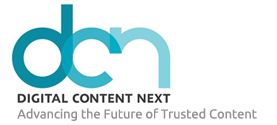Younger audiences, especially Gen Z, are shifting much of their video consumption to platforms like YouTube and TikTok. These platforms evolved from simple entertainment spaces into hubs that meet various emotional and intellectual needs, increasingly replacing traditional media consumption. The rise of these digital spaces fundamentally changes how people create, share, and consume media.
Digital Content Next’s (DCN) new study, Decoding Video Content Engagement explores how Gen Z and Gen Y interact with video content across YouTube and social media. These platforms, central to younger generations’ entertainment and information routines, feature a range of content. This content includes professionally produced material by established media brands and more spontaneous creations by independent influencers. This study provides insights into the motivations and behaviors of these audiences, with a follow-up quantitative phase planned to deepen the understanding.
How younger generations connect with video
The study identifies four primary themes in the way Gen Z and Gen Y engage with video content:
1. A primary entertainment medium
For younger generations, video is the primary entertainment medium. Unlike traditional media, which often require scheduled programming, platforms like YouTube and TikTok offer on-demand access to diverse content for education, escapism, and entertainment. This flexibility meets emotional and intellectual needs and enables creators and media brands to connect with younger audiences where they already are.
2. Algorithm-driven discovery
Algorithms are crucial in helping users discover content that matches their interests. Gen Z and Gen Y are active in shaping their feeds by engaging with content they enjoy, using likes, comments, and shares. This active participation enhances user satisfaction and ensures the platform serves more of what resonates with them, increasing their video consumption and deepening their engagement with YouTube and TikTok.
3. Instant decisions
Viewers often decide to engage with a video within the first 10 seconds. This makes the opening moments of a video critical for capturing attention. Whether from an influencer or a media brand, personal, relatable, and authentic content is more likely to engage viewers. Dynamic intros and the creator’s personality play a central role in sustaining interest and encouraging engagement.
4. Creator-driven content
Creators play an essential role in driving content consumption, as their personality, interests, and authenticity are key factors in fostering viewer engagement. Creators often appear as real, personal, and relatable figures. Therefore, audiences feel they can form connections with them, even if they are strangers in real life.
Consistency in content, whether in tone, subject matter, or humor, is vital in maintaining trust and building a loyal audience. Users anticipate new videos based on their enjoyment of previous content and expect a certain level of predictability. However, the authenticity of the personal brand, or media brand, is paramount.
Monetization and platform preferences
The rise of creator-led content presents new monetization opportunities as creators entertain and turn their audiences into valuable assets. Platforms like TikTok and YouTube allow creators to generate income through sponsorships, partnerships, and other revenue streams. The 50 Richest Content Creators study further highlights the earning power of top creators.
Media companies must recognize creators’ ecosystems and understand how they engage audiences. By understanding how creators and influencers resonate with younger demographics, media companies can enhance their brand presence and create authentic content that aligns with the expectations of their target audience.
Influencers’ role in the news ecosystem
The rise of news influencers further illustrates how traditional media consumption disrupts. According to the Pew Research Center’s study on America’s News Influencers, about one in five U.S. adults, and 37% of 18 to 29 year-olds, regularly access news through influencers on platforms like TikTok, YouTube, and Instagram. These influencers often operate independently of traditional media organizations and blend entertainment, personal branding, and journalism to engage their audiences.
Influencers often provide diverse content, from factual updates to humor, opinions, and breaking news. As the DCN study highlights, influencers often present differing opinions and foster engagement by offering unique perspectives. Pew reports that 65% of followers believe influencers enhance their understanding of current events. However, concerns about accuracy and accountability persist.
Navigating opportunities and challenges
As the digital landscape evolves, DCN’s findings underscore the need for media brands to adapt to the changing behaviors and preferences of younger audiences. Platforms like YouTube and TikTok offer opportunities to create personalized, authentic content that resonates with Gen Z and Gen Y. The growing creator economy further illustrates the value of influencer partnerships, enabling media companies to tap into established audiences and generate revenue through sponsorships and other collaborations. However, brands must remain vigilant about authenticity, as younger viewers quickly reject content that feels disingenuous or overly commercialized.
DCN’s follow-up quantitative research will provide deeper insights into these trends. It will offer actionable recommendations for media companies aiming to connect with younger audiences more authentically and engagingly. As video content continues to dominate the digital ecosystem, understanding the role of creators and their influence on consumer behavior is essential for navigating the future of media consumption.
DCN members can access after logging in, or registering an account (top right corner). Once logged in, a download button will appear below this text.

























